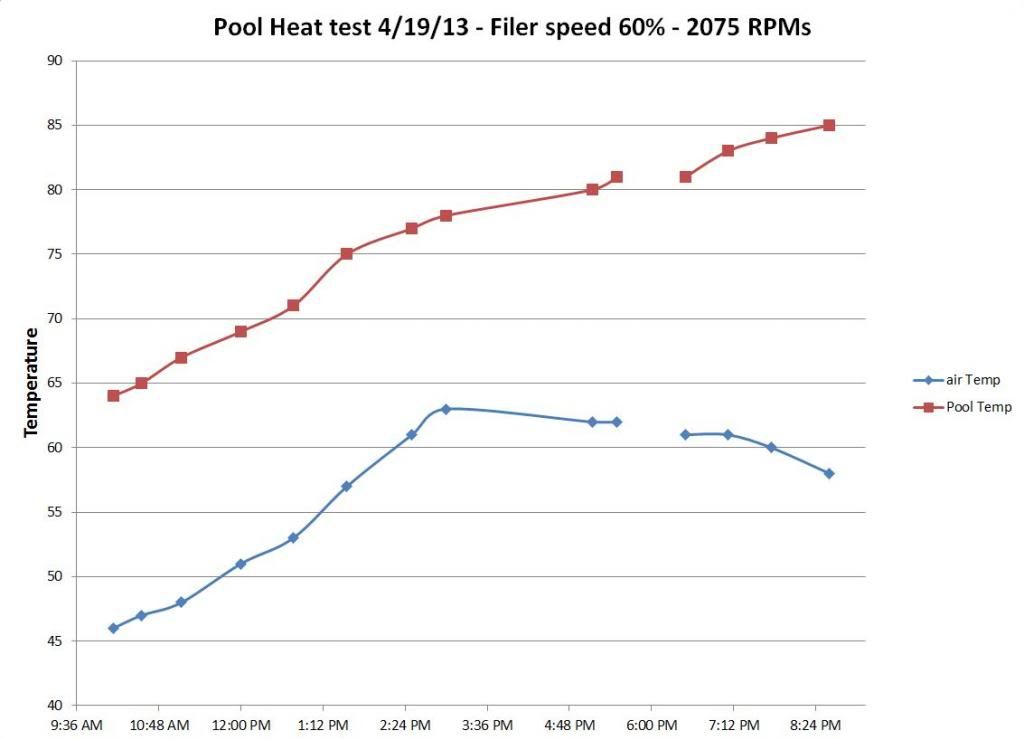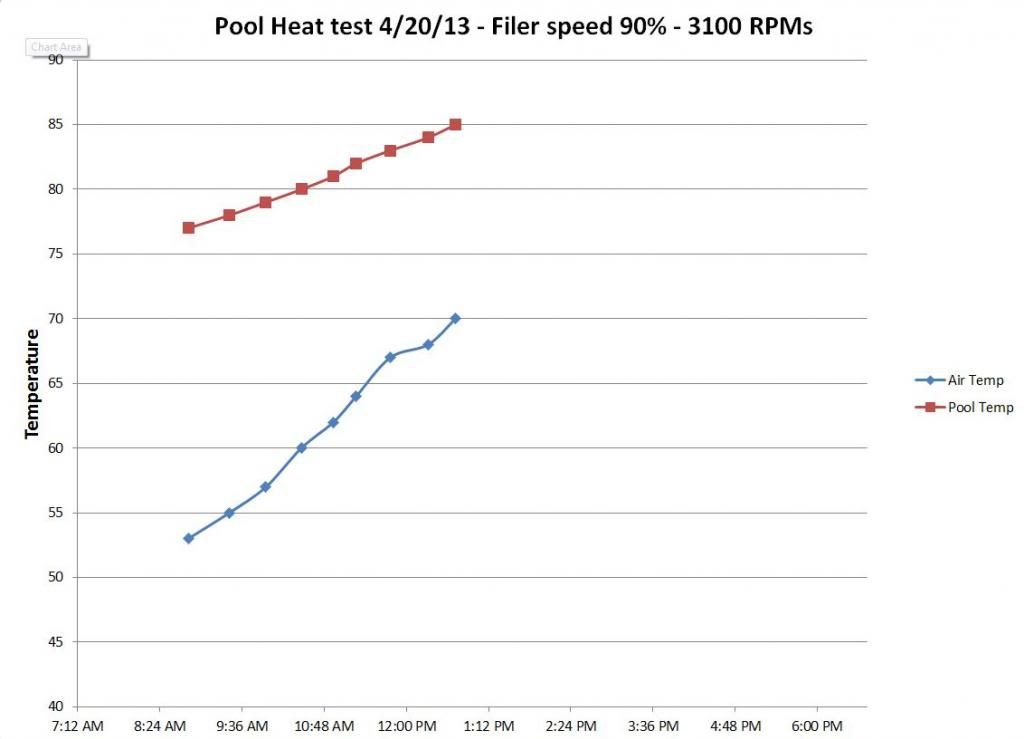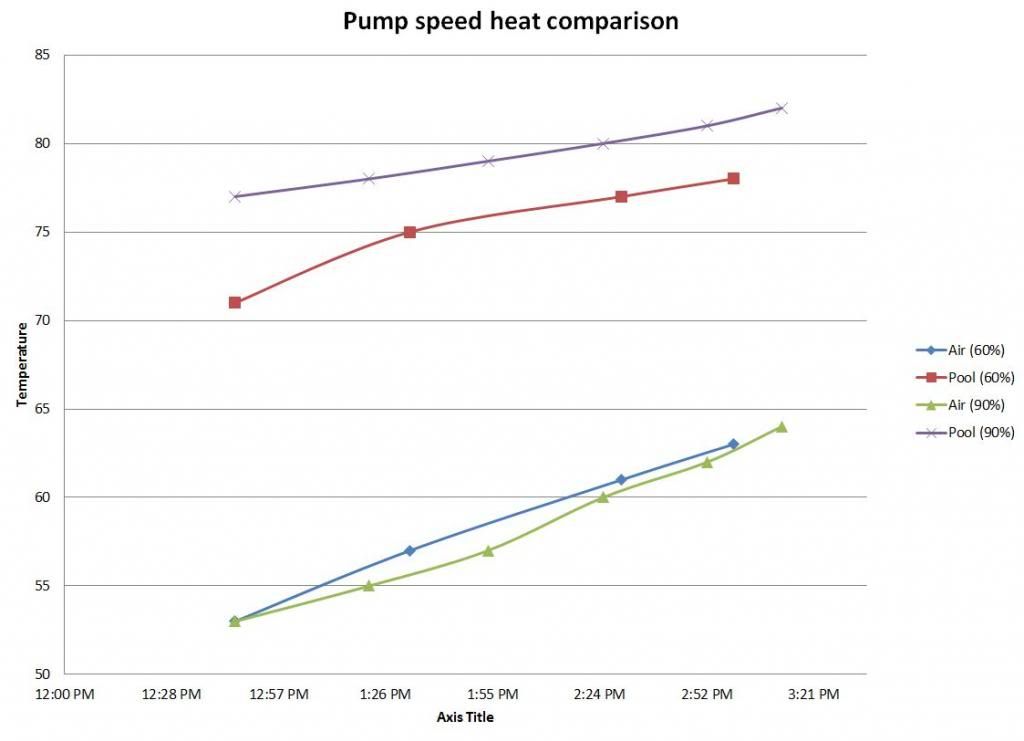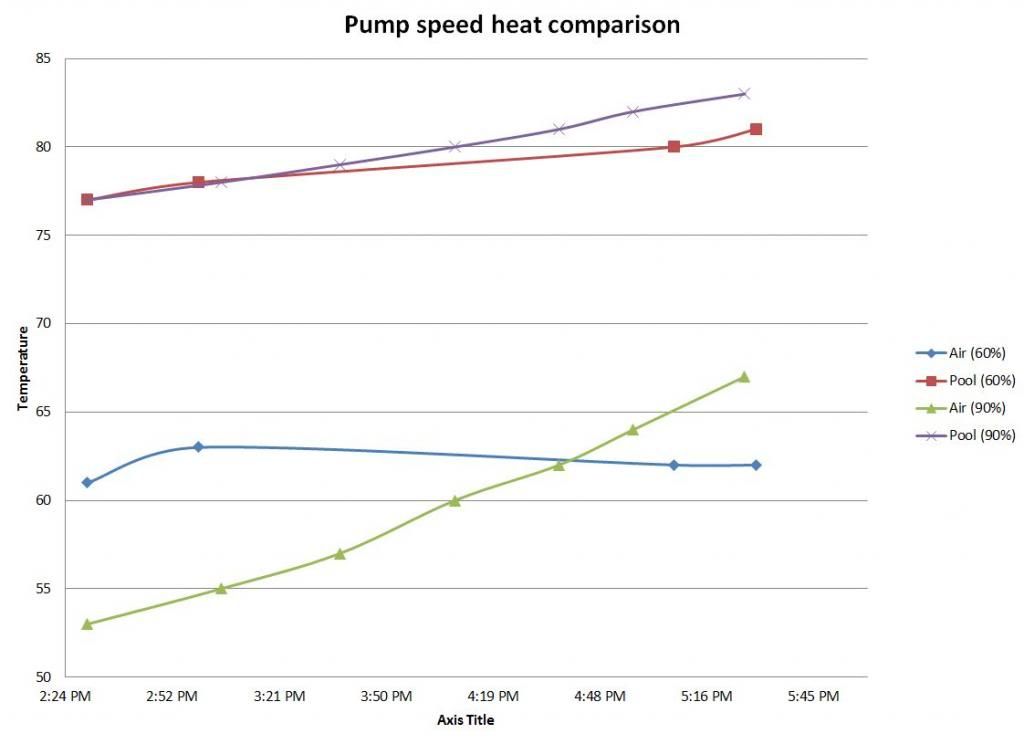I hope this is in the right forum area but I have a question on heating a pool with a variable speed pump.
Assuming there is enough flow for the heater on a low speed - lets say 1500RPM
Is there benefit to heating a pool on a lower speed? Some pro's I can think of are:
1) lower electricity on pump (obvious)
2) Water sits on the exchanger longer and thus heats the water more before exiting to pool
The con's I can think of are:
1) slow pool turnover rate so heating water could potentially take longer?
2) The efficiency is not as good with potential heat loss in the PVC return to the pool
What are your thoughts and what speed do you heat your pool at?
Assuming there is enough flow for the heater on a low speed - lets say 1500RPM
Is there benefit to heating a pool on a lower speed? Some pro's I can think of are:
1) lower electricity on pump (obvious)
2) Water sits on the exchanger longer and thus heats the water more before exiting to pool
The con's I can think of are:
1) slow pool turnover rate so heating water could potentially take longer?
2) The efficiency is not as good with potential heat loss in the PVC return to the pool
What are your thoughts and what speed do you heat your pool at?





